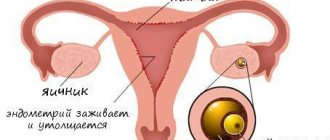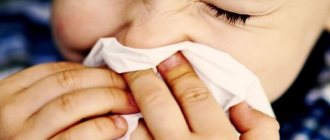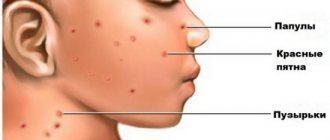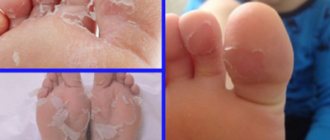Main reasons
Thrush in the mouth is otherwise called candidal stomatitis. The disease develops due to the rapid proliferation of fungal microorganisms, which are always present in certain quantities on human skin and mucous membranes. The growth of fungi, in turn, occurs due to disruption of the natural microflora of the oral cavity, which is possible in several cases:
- When the child's immune defense decreases. Premature and frequently ill infants are more susceptible to thrush;
- Failure to comply with basic hygiene standards;
- After antibiotic therapy. Candidiasis often occurs in babies if a nursing mother receives antibacterial treatment;
- If the baby is given sweetened water.
The appearance of a cheesy coating on the tongue during the neonatal period may be associated with infection of the child by fungal microorganisms as it passes through the birth canal. This happens if a woman with genital candidiasis in the last stages of pregnancy has not been treated.
There are several periods during which thrush is most likely to appear on the tongue, cheeks and gums of a baby:
- First 6 months of life. At this time, the baby’s immune system is just “learning” to perform the functions assigned to it, so it cannot always cope with the body’s defense against pathogens;
- Teething period;
- The time when a child begins to actively explore the world around him. Closer to 8-10 months, the baby begins to crawl, and naturally at this time only clean objects do not always get into his mouth.
The likelihood of a cheesy coating forming on the tongue is greatly increased in premature babies in the first months of their life and in bottle-fed infants. In the latter case, infant formula, unlike mother's milk, cannot fully supply the baby's body with the nutrients necessary for good immune function, which can cause thrush.
Candidiasis of the tongue in infants is often confused with the usual plaque that remains after feeding with milk or formula. You can distinguish the normal variant from cheesy deposits in thrush in the following ways:
- Milk deposits are clearly visible after feeding. After one or two hours, the tongue can be completely cleared; this process is accelerated if the baby is given regular water to drink.
- Removing plaque during candidiasis leads to the appearance of reddish spots on the mucous membrane of the tongue.
- Thrush on the tongue in infants can occur with general symptoms. That is, the child becomes capricious, cries, and refuses to eat.
A baby may be affected by several causes predisposing to candidiasis. All of them need to be installed and further effects on the body minimized, only this will help in the future to avoid relapse of stomatitis.
Prevention of thrush
It is almost impossible to protect the oral cavity from thrush once and for all, so the main preventive measure is careful hygiene and the elimination of risk factors for infection.
A strong immune system plays an important role in the prevention of oral candidiasis. The saliva of a healthy person has bactericidal properties and does not give Candida fungi a chance to become active in the oral cavity. To maintain immunity you need:
- lead a healthy lifestyle, regularly walk in the fresh air;
- Healthy food;
- to refuse from bad habits;
- do not self-medicate infectious diseases;
- ensure an optimal level of humidity in the room, especially if there is a small child in the house;
- maintain health in the presence of chronic illnesses.
Thrush in the mouth is a signal about the presence of problems in the body . Therefore, as soon as its first signs are noticed, it is necessary to undergo a full examination to determine the cause of the activation of the yeast-like fungus.
Signs of the disease
The earliest signs of thrush are reddish spots on the tongue, but at this stage few parents pay attention to the problem that has already appeared. Very often, the immune system of a healthy baby copes with the problem itself, and the disease stops progressing. But if this does not happen, then individual lesions begin to appear on the tongue, covered with a whitish coating; over time, it becomes loose and cheesy.

As the disease progresses, fungi begin to move from the tongue to the cheeks and gums, causing the formation of pathological foci in these places. Common symptoms include irritability, restless sleep. The affected areas cause pain and burning, which forces the baby to be capricious and refuse the breast and pacifier.
Thrush in a child’s mouth is divided into stages:
- The mild one appears only as reddish spots, on which plaque appears on top over time. General health does not suffer, and correctly selected treatment at this stage allows you to defeat the disease in 2-3 days.
- The middle stage of candidiasis is indicated if the cheesy plaque is already dense and its separation leads to erosions and pain. The baby sucks poorly and is worried.
- At the third stage, bleeding wounds begin to form; they are localized not only on the tongue, but also on the cheeks, inner surface of the lips, and gums. Fungal microorganisms can infect the upper palate and the walls of the larynx. The general signs of the disease are also clearly expressed - weakness, lethargy, body temperature rises, and the baby practically stops eating. Disruption of microflora also leads to dyspeptic disorders. With severe thrush, the child in the first months of life needs hospital treatment.
How does thrush manifest in children?
In many cases, the manifestation of thrush in children is a cheesy discharge on the gums, tongue, cheeks and lips. Sometimes thrush is associated with other diseases.
Thrush can be identified by the following symptoms:
- the mucous membranes are very red;
- the baby begins to eat poorly;
- cheesy coating on the oral mucosa;
- bad breath;
- pain and minor disturbances of the speech apparatus;
The course of the disease occurs in three stages: mild, moderate and complex. During the mild stage, you may notice small redness in the baby’s mouth, which begins to become covered with a white, curd-like discharge. They are very easy to clean. In the moderate form, after removing the plaque, small wounds remain, which may periodically bleed. Once the disease has reached a severe stage, the plaque takes the form of a film. Removing such plaque is a little difficult.
It is necessary to understand that thrush can bother you not only in the mouth, but also on the genitals and skin. When candidiasis begins to affect the genitals, the child may experience severe itching and burning, which causes some discomfort.
The appearance of thrush on the genitals in girls is characterized by strong white, curd-like discharge from the vagina. Discharge from candidiasis has a rather unpleasant odor. The child may complain strongly of severe burning or itching. Thrush can also spread to the genital area (buttocks, groin), where white deposits and small ulcers can be found.
When Candida bacteria begin to multiply in the skin area, you may notice the appearance of small blisters, which open over time, and in their place ulcers of any size appear. Due to the fact that there are so many of them, they can merge into a single whole, forming large affected areas. They have a clear crimson color and are easily noticeable.
If you start the development of skin thrush, it can have more serious consequences. If small ulcers may not bother the child in any way, then if more than 50% of the skin is affected, the baby may feel severe discomfort, in particular, poor appetite, severe itching, and more.
Possible complications
Thrush on the tongue of a baby is not dangerous only at the first stage of its development. As the disease progresses, not only the general well-being of children suffers, but there is also a risk of developing unwanted and difficult-to-treat complications.
Bleeding wounds on the mucous membranes of the oral cavity are an ideal gateway for the penetration of any pathogenic microorganisms. Therefore, thrush can be complicated by secondary infections. In advanced cases, fungal microorganisms spread far beyond the tongue, cheeks and gums, causing:
- Fungal cheilitis - damage to the lips;
- Glossitis is a mycotic inflammation of the walls of the throat;
- Formation of cracks in the corners of the lips;
- Mycotic stomatitis is an inflammation of the entire oral cavity.
In the later stages of thrush, the cheesy film becomes dense and spreads to the larynx, while swallowing food and even saliva causes sharp painful sensations. The child has a high temperature, loose stools, and enlarged lymph nodes. Diaper dermatitis may occur; irritation around the anus leads to irritation and the appearance of erosions. Thrush in the mouth in female infants often causes genital candidiasis.
Due to the refusal of food and water, the baby loses weight and dehydration occurs; thrush can also cause candidal sepsis.
Causes of thrush on the tongue in newborns
The main causative agent of thrush is fungi of the genus Candida. These yeast-like fungi can be found in food and household items. A small number of these microorganisms are found in the body of every person. And only under favorable conditions for them, mushrooms increase their population. This provokes the appearance of symptoms of thrush.
Speaking about thrush on the tongue in infants, first of all, it is worth noting weak immunity. The body of a newborn baby is not able to independently fight various pathogenic microorganisms. The defeat occurs almost immediately.
The risk zone includes the following factors:
- baby's age up to 1 year;
- taking antibiotics by the baby from the first days of life;
- taking antibiotics by a woman during pregnancy and breastfeeding;
- the presence of autoimmune diseases in infants (for example, diabetes mellitus);
- non-compliance with diet by a nursing mother;
- lack of compliance with hygienic standards for caring for a newborn;
- improper nutrition of a newborn child.
The mucous membrane of a newborn's oral cavity is very thin and does not have all the necessary enzymes. Therefore, any fungi and bacteria easily attach to the tongue. In addition, the likelihood of developing thrush on the tongue increases if the baby is born before the required time.
The mother herself can infect her baby with thrush during childbirth. The fact is that at birth the baby passes through the birth canal. If a woman has vaginal candidiasis, there is almost a 100% chance that her newborn baby will also have thrush.
Treatment
How to cure thrush on the tongue of a baby can be decided independently only if the disease is still at the initial stage of development. At this time, increased care of the baby and the use of some home remedies with medicinal properties will help defeat candidiasis.
With the progression of candidal stomatitis, the pediatrician prescribes systemic agents with antifungal components - Diflazon, Diflucan. Their dosage is selected based on the baby’s age, and is administered through a syringe or from a spoon. Local therapy consists of the use of antifungal ointments and solutions. Treatment usually lasts no more than 10 days.
When treating oral thrush in a child, the following is often used:
- Nystatin. This may be nystatin ointment or an aqueous tablet solution. Treatment is carried out up to two times a day;
- Levorin suspension. It is prepared from a tablet of 100 thousand units, which must be crushed and mixed with 5 ml of water. Tongue treatment can be repeated every 4-5 hours;
- Vinylin. A cotton swab is soaked in the balm and used to wipe away areas of white plaque. You can use Vinilin 3-4 times a day, 1-1.5 after meals;
- Candida solution. Used for treatment 2-3 times a day.
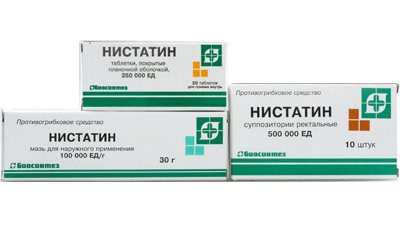
Nystatin
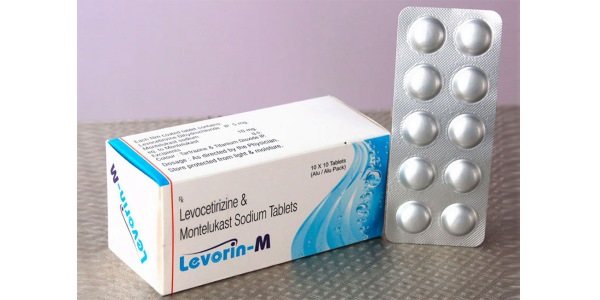
Levorin
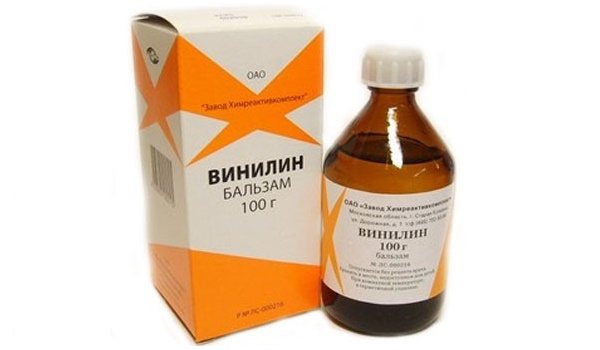
Cholisal gel will help numb the mucous membrane during thrush and reduce inflammation. It can be applied to the tongue before feeding for 3-5 minutes. The gel reduces pain, making it easier to suck on a bottle or breast.
In severe cases, the child must be treated in a hospital. In addition to fungal agents, he may be prescribed antibiotics, saline solutions to treat dehydration, and immunomodulatory agents.
Baby care
Immediately when a cheesy coating is detected in the mouth, the mother should do the following:
- Rinse and boil in soda solution all nipples, bottles and toys that the child puts into his mouth;
- Review your diet if your baby is receiving breast milk. For a while, you should exclude from your diet all foods that promote the growth of fungi. These are sweets, fatty foods, spices;
- Before each feeding, rinse your breasts with warm water and soap;
- After feeding, remove any remaining food from the baby's tongue with a swab soaked in plain water. There is no need to lubricate the oral cavity with antifungal agents every time; most often, the frequency of their use is no more than 4 times a day.

Enhanced care and the use of simple folk methods to combat thrush will help get rid of the disease and restore calm to the baby in just 2-3 days. And most importantly, these measures will prevent further progression of thrush.
Traditional methods
Treatment of thrush on the tongue of a baby involves the use of products that are easy to find in any home.
Soda
Soda solution perfectly stops the proliferation of fungal microorganisms and helps restore the mucous membrane. Prepare a solution from a teaspoon of dry soda and a glass of warm boiled water. After thorough mixing, the solution is ready for use:
- Before treating the oral cavity, you must wash your hands well with soap and trim long nails;
- Wrap your index finger with a bandage or gauze so that there are no protruding threads;
- The wrapped finger is well wetted in the soda solution;
- It is necessary to wipe not only the tongue, but also the inner surfaces of the lips, cheeks, and gums.

The procedure should be carried out approximately half an hour before feeding. You can also treat the nipples of a nursing woman with a soda solution. During cleansing, you should not be too zealous; it is not necessary to achieve complete removal of plaque, as this can lead to bleeding erosions.
Sage
Sage herb has antiseptic properties. Treatment of the oral cavity with sage decoction can be alternated with the use of a soda solution. The decoction is prepared from two spoons of dry herbal raw materials and a glass of boiling water. The drink is heated in a water bath for about 15 minutes, infused and filtered. It is advisable to prepare the broth fresh each time.
If you don’t have sage in your home medicine cabinet, you can replace it with calendula flowers and St. John’s wort.
Honey
In two tablespoons of warm water you need to dilute 10 grams of liquid honey. The resulting sweet water is used to treat the membranes of the oral cavity up to 5 times a day.
Magnesium permanganate
Potassium permanganate has antiseptic properties; its use not only stops the proliferation of fungi, but also prevents secondary infection. A slightly pink solution of potassium permanganate is suitable for treatment; a finger wrapped in a bandage is moistened in it and the inflamed areas are sanitized. The magnesium permanganate solution must be prepared very carefully. First, a few grains of potassium permanganate are dissolved in a container with warm water, then the initial solution is poured into a mug, jar and diluted with the required amount of water. Failure to comply with this rule can lead to damage to the mucous membrane - undissolved grains of magnesium permanganate cause a burn.
When treating thrush, one should not forget that the microclimate in the room also affects the condition of the mucous membranes of the mouth. The air in the child's room should be clean and humidified. In a dry room, saliva becomes viscous and viscous, and this reduces its protective properties and therefore contributes to the spread of pathogenic microorganisms. You can humidify the air in the room using special devices, or by placing containers of water near heating radiators. The baby's nose also needs regular cleansing - breathing through the nose increases the body's resistance to infections.
If traditional methods of treating thrush are ineffective for 2-3 days, the child must be shown to a doctor. Prescribing antifungal agents will help cope with the disease in the shortest possible time.
How to treat
As soon as the mother saw the white tongue of the newborn and was convinced that it was not a trace of milk or baby food, but something more serious, treatment should be started immediately.
At an early stage of the disease, with a mild form of candidiasis, you can cope with it in a few days in a very simple way. You need to dilute 1 teaspoon of soda in a glass of boiled warm water, wrap a clean bandage around your finger, moisten it in the soda solution and very carefully, trying as much as possible not to cause pain to the child, moisten the affected areas. Just wet it, but under no circumstances rub or tear off films and whitish deposits! The procedure should be carried out 5-7 times a day until the white plaque completely disappears + 2 days of prevention. If the child refuses to open his mouth, you need to gently press his chin with the thumb of his left hand and keep his mouth open during the procedure.
You can rinse the pacifier in a weak soda solution before giving it to your baby, and you can also wash your breasts with a soda solution before feeding.
Another popular method: dilute a teaspoon of honey in 50 ml of warm boiled water and lubricate the child’s mouth with honey syrup in the same way as with soda. Honey has strong bactericidal and wound-healing properties, thanks to which the child recovers in a matter of days.
Important! Honey is a strong allergen, so you can clean the white tongue of a newborn with honey syrup only if the mother is 100% sure that the baby is not allergic to honey.
A severe form of candidiasis is when a white coating covers the baby’s mouth with a continuous “carpet”, it is difficult to peel off, and underneath there are severely inflamed, sometimes bleeding areas. All this brings burning, pain and severe discomfort; the child’s temperature rises, sometimes up to 39 degrees, he cries a lot and refuses to eat. In this case, treatment with soda solution is ineffective, and the intervention of a pediatrician is required. The doctor most often prescribes nystatin-based medications and vitamins B12. By the way, 10 years ago thrush was actively treated with a 5% borax solution, which today is prohibited due to toxicity.
Self-medication for severe candidal stomatitis is unacceptable! This can be dangerous for the health and life of the child!
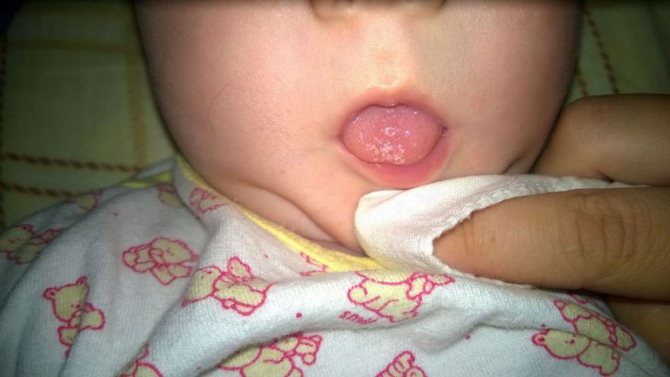
It is necessary to treat the disease in order to prevent its penetration into the mucous membrane of the esophagus, stomach and intestines.
Prevention
In most cases, it is possible to avoid the development of thrush in a child’s mouth by following just a few rules:
- In the first year of a child’s life, all his pacifiers and bottles should be regularly doused with boiling water and periodically boiled in a soda solution.
- Hygienic procedures must be strictly observed. Mothers should wash their hands after changing diapers, when feeding the baby, and before dispensing baby food.
- After meals, give two or three spoons of water. It helps remove milk residues and thereby reduces the likelihood of fungal growth.
- A nursing mother should take antibacterial treatment only as indicated. When prescribing antibiotics, it is better for a woman to temporarily stop breastfeeding.
- Adhere to the timing of introducing complementary foods. An early transition to another food can provoke the growth of pathogenic microflora, which will lead to the appearance of candidal stomatitis.

Thrush on the tongue in children of the first year of life is a fairly common problem, which, in most cases, parents can cope with on their own. But if the condition of the oral cavity and the general well-being of the baby worsens, it is necessary to consult a local pediatrician.
Symptoms of thrush in a newborn
Symptoms of thrush in the mouth for a baby are unpleasant, they cause a lot of discomfort to the baby, give him weakness and lethargy, and in case of complications, they are accompanied by a burning sensation, pain, and in emergency cases there have been deaths (this applied to premature babies).
If a child constantly cries, sleeps poorly, often spits up, refuses to eat, and eventually loses weight, which is doubly dangerous for his health, because now he should regularly gain weight in order to grow healthy.
By being capricious and crying, the baby is signaling you about something. You have already checked the diaper, taken the temperature, visually examined the child to see if he was hurt somewhere, but it wouldn’t hurt to look in the mouth too.
Symptoms of thrush often appear in the first two weeks of a child's life.
Specific symptoms can be seen on the lining of the baby's mouth. Manifestations depend on the stage of development of the disease. Stages can move from one to another, from lighter to more severe.
Thrush in the baby's mouth first affects the tongue, then spreads to the palate, gums, lips, and cheeks. At the initial stage, it is barely noticeable, but as it develops, its symptoms become more vivid and unpleasant and even painful, the plaque acquires a sour smell and can change color.
Like any fungus, candida has a specific development throughout the body, and can spread to internal organs; this is rare, but very dangerous for the baby’s life.
- At a mild stage of candidiasis in the mouth of newborns, small red spots appear, which, after a few days, become covered with cheesy white spots. This does not cause any discomfort to the baby.
- The middle stage is the appearance of abundant white plaque and the development of thrush. Marked by pain, burning and refusal to eat.
- Severe form - the ulcers bleed, the fungus spreads to the entire tongue, it is at this stage that the fungus moves from the tongue to the palate, tonsils, and even the lips and cheeks of the baby.
The plaque should be removed, this is done with your hand (fingers) or a toothbrush, but carefully and delicately. Then the cavity is treated, usually with a weak solution of soda (water and soda, so as not to infect the baby with anything, take boiled water, cooled to room temperature).
Below we will look at how to treat thrush in newborns in more detail.

